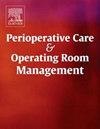手术室学生在临床环境中面临的沟通挑战:来自定性内容分析的见解
IF 1
Q2 Nursing
Perioperative Care and Operating Room Management
Pub Date : 2025-09-16
DOI:10.1016/j.pcorm.2025.100553
引用次数: 0
摘要
在手术室等高压临床环境中,有效的沟通是一项至关重要的非技术技能,影响患者安全和团队协调。然而,在临床培训中,手术室学生在发展这些技能方面面临障碍。本研究旨在探讨并深入了解影响手术室学生在临床环境中遇到的沟通障碍的环境和系统层面因素。方法采用常规内容分析方法,对伊朗西部哈马丹医科大学10名本科手术室学生进行定性研究。参与者通过有目的的抽样选择,并继续招募,直到数据饱和。通过半结构化访谈收集数据,并同时使用Graneheim和Lundman方法进行分析。根据古巴和林肯的标准,可信赖性得到了保证。结果分析确定了五个主要主题:(1)个人障碍(害怕错误、自卑、内向、对临床环境缺乏兴趣);(2)限制性组织和等级结构(外科医生的专制主义、等级文化、缺乏正式的沟通渠道);(3)学术培训与临床需求的差距(沟通技能培训不足、只注重技术技能、缺乏专业技能);(4)临床环境压力(繁重的工作量、时间限制、不利的身心状况),以及(5)缺乏专业支持(缺乏积极的临床导师,医疗团队忽视学生的角色,缺乏积极的沟通榜样)。结论手术室学生的沟通障碍是多方面的,有个人因素、组织因素、教育因素和环境因素。应对这些挑战需要修订课程,加强专业支持,培养心理安全的临床环境。本文章由计算机程序翻译,如有差异,请以英文原文为准。
Communication challenges faced by operating room students in clinical environments: Insights from a qualitative content analysis
Background
Effective communication is a crucial non-technical skill in high-pressure clinical environments like operating rooms, impacting patient safety and team coordination. However, operating room students face obstacles in developing these skills during clinical training. This study aimed to explore and provide an in-depth understanding of the contextual and system-level factors shaping communication barriers encountered by operating room students in clinical settings.
Methods
A qualitative study with a conventional content analysis approach was conducted in 2025 among ten undergraduate operating room students from Hamadan University of Medical Sciences, western Iran. Participants were selected through purposive sampling, and recruitment continued until data saturation was achieved. Data were collected through semi-structured interviews and analyzed concurrently using the Graneheim and Lundman method. Trustworthiness was ensured using Guba and Lincoln’s criteria.
Results
The analysis identified five main themes:(1) Intrapersonal barriers (fear of mistakes, low self-esteem, introversion, lack of interest in the clinical environment),(2) Restrictive organizational and hierarchical structures (surgeons’ authoritarianism, hierarchical culture, lack of formal communication channels),(3) Gap between academic training and clinical demands (insufficient communication skills training, exclusive focus on technical skills, lack of structured feedback),(4) Clinical environmental pressures (heavy workload, time constraints, adverse physical and psychological conditions), and (5) Lack of professional support (absence of active clinical instructors, neglect of students’ roles by the healthcare team, scarcity of positive communication role models).
Conclusion
Communication barriers among operating room students are multifaceted, shaped by individual, organizational, educational, and environmental factors. Addressing these challenges requires curriculum revisions, strengthened professional support, and fostering psychologically safe clinical environments.
求助全文
通过发布文献求助,成功后即可免费获取论文全文。
去求助
来源期刊

Perioperative Care and Operating Room Management
Nursing-Medical and Surgical Nursing
CiteScore
1.30
自引率
0.00%
发文量
52
审稿时长
56 days
期刊介绍:
The objective of this new online journal is to serve as a multidisciplinary, peer-reviewed source of information related to the administrative, economic, operational, safety, and quality aspects of the ambulatory and in-patient operating room and interventional procedural processes. The journal will provide high-quality information and research findings on operational and system-based approaches to ensure safe, coordinated, and high-value periprocedural care. With the current focus on value in health care it is essential that there is a venue for researchers to publish articles on quality improvement process initiatives, process flow modeling, information management, efficient design, cost improvement, use of novel technologies, and management.
 求助内容:
求助内容: 应助结果提醒方式:
应助结果提醒方式:


